Fields Physics Parents Kao Chun-Hsiang Spouse May-Wan Kao (m. 1959) | Role Electrical engineer Name Charles Kao Books A Time And A Tide | |
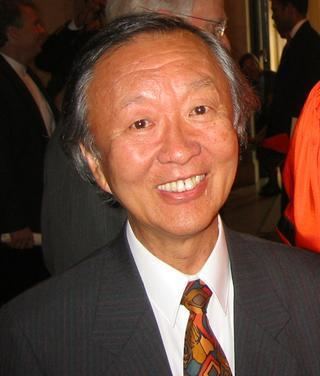 | ||
Full name Charles Kuen Kao Residence Republic of China (1933–1948)Hong Kong (1949–present)United Kingdom (1952–1970)United States Citizenship United StatesUnited Kingdom Nationality United StatesUnited Kingdom Institutions The Chinese University of Hong KongITT CorporationStandard Telephones and Cables Alma mater University College London (PhD 1965, issued by University of London)University of Greenwich (BSc 1957, issued by University of London) Education University of Greenwich (1957), University of London Known for Optical fiber, Fiber-optic communication Died September 23, 2018 (aged 84) Sha Tin, Hong Kong Similar Daniel C Tsui, Lap Chee Tsui, Robert D Maurer | ||
Brilliant chinese charles k kao part 2a
Sir Charles Kuen Kao, GBM, KBE, FRS, FREng (November 4, 1933 – September 23, 2018) was a Chinese-born Hong Kong, American and British electrical engineer and physicist who pioneered in the development and use of fiber optics in telecommunications. Kao, known as the "Godfather of Broadband", "Father of Fiber Optics" or "Father of Fiber Optic Communications", was jointly awarded the 2009 Nobel Prize in Physics for "groundbreaking achievements concerning the transmission of light in fibers for optical communication". Kao was holds multiple citizenship of Hong Kong, the United Kingdom and the United States.
Contents
- Brilliant chinese charles k kao part 2a
- Brilliant chinese charles k kao part 1b
- Early life
- Ancestry and family
- Fiber optics and communications
- Environmental studies and energy leadership
- Honors and awards
- Honours
- Academic offices
- Honorary degrees
- Awards
- Others
- Monographs
- Death
- References
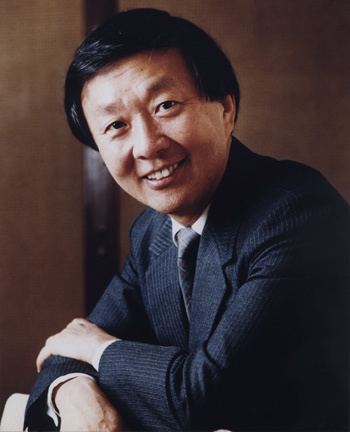
Brilliant chinese charles k kao part 1b
Early life

Charles Kao was born in Shanghai in 1933, and his ancestral home is in nearby Jinshan. He studied Chinese classics at home with his brother, under a tutor. He also studied English and French at an international school in Shanghai which was founded by a number of progressive Chinese educators including Cai Yuanpei.
Kao's family moved to Hong Kong in 1948 where he completed his secondary education (advanced level) at St. Joseph's College in 1952. He did his undergraduate studies in electrical engineering at Woolwich Polytechnic (now the University of Greenwich), obtaining his Bachelor of Science degree.
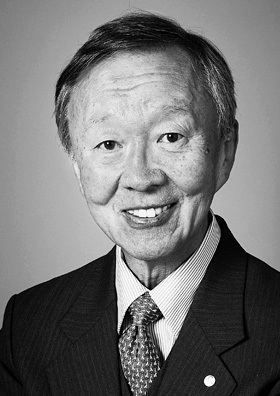
He then pursued research and received his PhD degree in electrical engineering in 1965 from University College London (under Professor Harold Barlow) as an external student while working at Standard Telecommunication Laboratories (STL) in Harlow, England, the research centre of Standard Telephones and Cables. It is there that Kao did his first groundbreaking work as an engineer and researcher working alongside George Hockham under the supervision of Alec Reeves.
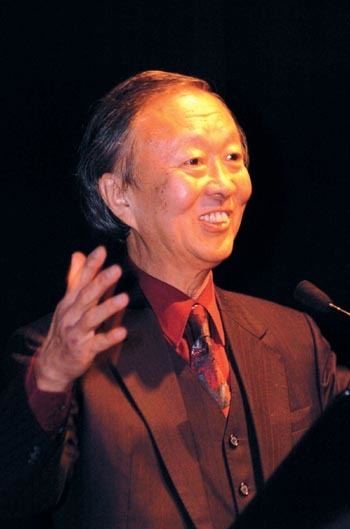
Kao joined The Chinese University of Hong Kong (CUHK) in 1970, to found the Department of Electronics, which later became the Department of Electronic Engineering. During this period, Kao was the Reader and then the Chair Professor of Electronics at CUHK; he built up both undergraduate and graduate study programs of electronics and saw the graduation of his first students. Under his leadership, the School of Education and other new research institutes were established. He then went back to ITT Corporation in 1974 (the parent corporation of STC at that time) in the United States and worked in Roanoke, Virginia, first as Chief Scientist and later as Director of Engineering. In 1982, he became the first ITT Executive Scientist and was stationed mainly at the Advanced Technology Center in Connecticut. While there, he served as an adjunct professor and Fellow of Trumbull College at Yale University. In 1985, Kao spent one year in West Germany, at the SEL Research Centre. In 1986, Kao was the Corporate Director of Research at ITT.
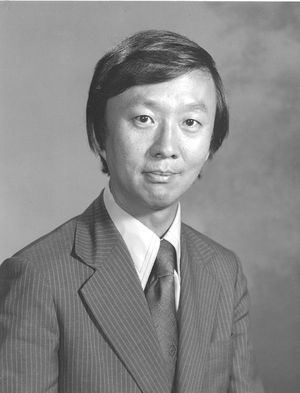
Kao was the Vice-Chancellor (President) of the Chinese University of Hong Kong from 1987 to 1996. After his retirement from CUHK in 1996, Kao spent his 6-month sabbatical leave at the Imperial College London Department of Electrical and Electronic Engineering; from 1997 to 2002, he also served as Visiting professor in the same department. From 1993 to 1994, he was the President of ASAIHL (The Association of Southeast Asian Institutions of Higher Learning).

Kao then worked as the Chairman and CEO of Transtech Services Ltd., a telecommunication consultancy company in Hong Kong. He was the founder, Chairman and CEO of ITX Services Limited. From 2003 to January 30, 2009, Kao was an Independent Non-executive Director and Member of the Audit Committee of Next Media. Since 1991, Kao has been an Independent Non-Executive Director and a member of the Audit Committee of the Varitronix International Limited in Hong Kong.
In 2000, Kao founded the Independent Schools Foundation Academy (ISF), which is located in Cyberport, Hong Kong. He was its founding Chairman in 2000, and stepped down from the Board of the ISF in December 2008.
Kao was the keynote speaker at IEEE GLOBECOM 2002 in Taipei, Taiwan. In 2003 Kao was named a Chair Professor by special appointment at the Electronics Institute of the College of Electrical Engineering and Computer Science, National Taiwan University.
In 1996, Kao donated to Yale University, and the Charles Kao Fund Research Grants was established to support Yale's studies, research and creative projects in Asia. The fund currently is managed by Yale University Councils on East Asian and Southeast Asian Studies.
Kao was suffering from Alzheimer's disease since early 2004 and has speech difficulty, but has no problem recognizing people or addresses. Kao's father also suffered from the same disease. Since 2008, he resided in Mountain View, California, United States, where he moved from Hong Kong in order to live near his children and grandchild.
Pottery making, a traditional Chinese handiwork, is a hobby of Kao's. Kao also enjoys reading Wuxia novels.
On October 6, 2009, Kao was awarded the Nobel Prize in Physics for his contributions to the study of the transmission of light in optical fibers and for fiber communication, said: "I am absolutely speechless and never expected such an honour". Kao's wife told the press that the prize after paying tax to the US government, will primarily be used for Charles's medical expenses.
Ancestry and family
Kao's father Kao Chun-Hsiang (高君湘) was a lawyer who obtained his J.D. from the University of Michigan Law School in 1925. He was a professor at Soochow University (then in Shanghai) Comparative Law School of China.
His grandfather was Gao Xie (aka Gao Chuiwan), a famous scholar, poet, literator, artist, and a leading figure of the Southern Society (南社) during the late Qing Dynasty. Some influential writers including Gao Xu, aka Gao Tianmei), Yao Guang (姚光), and Gao Zeng (高增) were also Gao's close relatives.
His father's cousin was astronomer Ping-Tse Kao (Kao Crater is named after him). Kao has a younger brother named Timothy Wu Kao (高鋙), who is a civil engineer and Professor Emeritus at the Catholic University of America in Washington, D.C. His research is in hydrodynamics.
Kao met his future wife May-Wan Kao (née: Wong; 黃美芸) in London after graduation. His wife was a Fortran programmer who worked in the same factory as Kao. She is British Chinese. They were married in 1959 in London, and have two children, a son and a daughter, both of whom reside and work in Silicon Valley, California.
Fiber optics and communications
In the 1960s at Standard Telecommunication Laboratories (STL) based in Harlow, Essex, Kao and his co-workers did their pioneering work in the realisation of fiber optics as a telecommunications medium, by demonstrating that the high-loss of existing fibre optics arose from impurities in the glass, rather than from an underlying problem with the technology itself.
In 1963 when Charles first joined the optical communications research team he made notes summarising the background situation and available technology at the time, and identifying the key individuals involved. Initially Kao worked in the team of Antoni E. Karbowiak (Toni Karbowiak), who was working under Alec Reeves to study optical waveguides for communications. Kao's task was to investigate fiber attenuation, for which he collected samples from different fiber manufacturers and also investigated the properties of bulk glasses carefully. Kao's study primarily convinced himself that the impurities in material caused the high light losses of those fibers.
In 1963, Kao was appointed head of the electro-optics research group at STL. He took over the optical communication program of STL in December 1964, because his supervisor, Karbowiak, left to take the Chair in Communications in the School of Electrical Engineering at the University of New South Wales (UNSW), Sydney, Australia.
Although Kao succeeded Karbowiak as manager of optical communications research, he immediately decided to abandon Karbowiak's plan (thin-film waveguide) and overall change research direction with his colleague George Hockham. They not only considered optical physics but also the material properties. The results were first presented by Kao to the IEE in January 1966 in London, and further published in July with George Hockham (1964–1965 worked with Kao). This study first theorized and proposed to use glass fibers to implement optical communication, the ideas (especially structural features and materials) described are largely the basis of today's optical fiber communications.
In 1965, Kao with Hockham concluded that the fundamental limitation for glass light attenuation is below 20 dB/km (decibels per kilometer, is a measure of the attenuation of a signal over a distance), which is a key threshold value for optical communications. However, at the time of this determination, optical fibers commonly exhibited light loss as high as 1,000 dB/km and even more. This conclusion opened the intense race to find low-loss materials and suitable fibers for reaching such criteria.
Kao, together with his new team (members including T.W. Davies, M.W. Jones, and C.R. Wright), pursued this goal by testing various materials. They precisely measured the attenuation of light with different wavelengths in glasses and other materials. During this period, Kao pointed out that the high purity of fused silica (SiO2) made it an ideal candidate for optical communication. Kao also stated that the impurity of glass material is the main cause for the dramatic decay of light transmission inside glass fiber, rather than fundamental physical effects such as scattering as many physicists thought at that time, and such impurity could be removed. This led to a worldwide study and production of high-purity glass fibers. When Kao first proposed that such glass fiber could be used for long-distance information transfer and could replace copper wires which were used for telecommunication during that era, his ideas were widely disbelieved; later people realized that Kao's ideas revolutionized the whole communication technology and industry.
Kao played a leading role in the early stage of engineering and commercial realization of optical communication. In spring 1966, Kao traveled to the U.S. but failed to interest Bell Labs, which was a competitor of STL in communication technology at that time. He subsequently traveled to Japan and gained support. Kao visited many glass and polymer factories, discussed with various people including engineers, scientists, businessmen about the techniques and improvement of glass fiber manufacture.
In 1969, Kao with M.W. Jones measured the intrinsic loss of bulk-fused silica at 4 dB/km, which is the first evidence of ultra-transparent glass. Bell Labs started considering fiber optics seriously.
Kao developed important techniques and configurations for glass fiber waveguides, and contributed to the development of different fiber types and system devices which met both civil and military application requirements, and peripheral supporting systems for optical fiber communication. In mid-1970s, he did seminal work on glass fiber fatigue strength. When named the first ITT Executive Scientist, Kao launched the "Terabit Technology" program in addressing the high frequency limits of signal processing, so Kao is also known as the "Father of the Terabit Technology Concept". Kao has published more than 100 papers and was granted over 30 patents, including the water-resistant high-strength fibers (with M.S. Maklad).
At an early stage of developing optic fibers, Kao already strongly preferred single mode for long-distance optical communication, instead of using multi-mode systems. His vision later was followed and now is applied almost exclusively.
Kao is also a visionary of modern submarine communications cables and largely promoted this idea. He predicted in 1983 that world's seas would be littered with fiber optics, five years ahead of the time that such a trans-oceanic fiber-optic cable first became serviceable.
Ali Javan's introduction of a steady helium–neon laser and Kao's discovery of fiber light-loss properties now are recognized as the two essential milestones for the development of fiber-optic communications.
Environmental studies and energy leadership
Kao is one of the few earliest who started studying the environmental effects of the land reclamation in Hong Kong, and presented one of his first related studies at the conference of ACU (Association of Commonwealth Universities) in Edinburgh in 1972.
Kao was the Chairman and Member of the Energy Advisory Committee (EAC) of Hong Kong for two years, and retired from the position on July 15, 2000. Kao is a Member of the Council of Advisors on Innovation and Technology of Hong Kong, appointed on April 20, 2000.
Honors and awards
Kao has received numerous honors and awards in his life, the most notable being the Nobel Prize in Physics. His awards including the following:
Honours
Academic offices
Honorary degrees
Awards
Kao donated most of his prize medals to the Chinese University of Hong Kong.
Others
Monographs
Death
Kao died at Bradbury Hospice in Hong Kong on 23 September 2018 at the age of 84.
